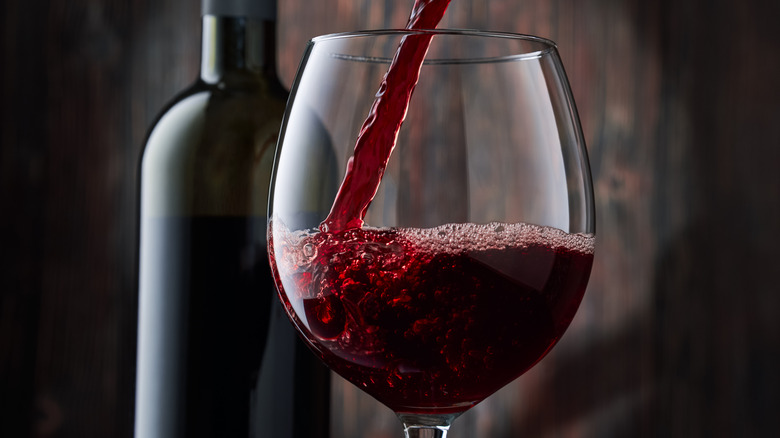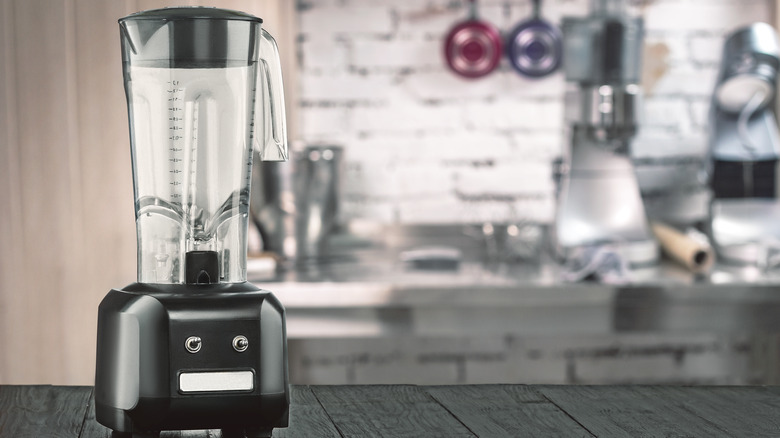The Countertop Appliance That Can Aerate Wine In A Flash
The world of wine drinkers is vast, ranging from those who enjoy a bottle of Aldi or Trader Joe's notoriously inexpensive vino to self-proclaimed experts who enjoy collecting rare bottles and analyzing flavor palettes at exclusive tasting events. If you fall somewhere on the more casual end of the spectrum, you've likely heard the discourse surrounding the "best" way to drink certain wines and seen the plethora of gadgets sold to enhance your wine-drinking experience and wondered, "Is this really worth it?"
Like many things in life, the answer is often "It depends." While some bottles are perfectly fine to pop open and enjoy immediately after buying, others are probably better off chilling before consumption. Some likely benefit from being allowed to age a little before drinking. Enter aeration.
While it may seem like a complicated extra step, aerating wine means exposing it to oxygen, a process which Wine Cooler Direct notes helps "expose its full aroma and flavor" and helps eliminate the sometimes bitter, drying taste of tannins in younger red wines. Even the most novice wine connoisseurs will likely appreciate more fully-fledged flavor in their next nightcap, so aerating that new bottle may be beneficial. But what's the best way to try it out?
A blender can serve as a makeshift aerator
There are hundreds of wine aerators on the market, ranging from small bottle spouts you can purchase on Amazon for less than $20 to Cooper's Hawk Winery's flashy centerpiece Grapevine decanter and aerator which sells for a whopping $220. Choosing the best aerator for your purposes can be challenging, but if you really want to give it a test and don't want to leave your wine out and open for an hour or two to breathe before drinking it — you likely already have a tool that can get the job done sitting in your kitchen.
According to Williams Sonoma's Taste Blog, cookbook author Nathan Myhrvold recommends tossing it in a blender for 30 to 60 seconds. Myhrvold argues the unorthodox process very quickly exposes the wine to a significant amount of air, which has the effect of aging it and decanting it all in one convenient step. Simply pour the bottle of wine into the blender, close it up, then blitz it until it starts to foam up. Let the foam recede, and voilà, you have a perfectly aerated glass of red wine.
Williams Sonoma notes this is a controversial method, so it's advisable to test it on cheaper bottles of wine in case you don't like the results. But if you do, you may want to consider a more expensive, unique vino for the task.

